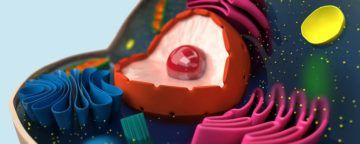Amanda Heidt in The Scientist:

Despite recent advances in the study of eukaryogenesis, much remains unresolved about the origin and evolution of the most complex domain of life.
This year, University of Paris-Saclay biologist Purificación López-García embarked with colleagues on a journey into life’s ancient past. The researchers traveled to the altiplanos of the northern Atacama Desert, high-altitude stretches of rocky soil and shrubbery in South America that are among the driest places in the world. Despite their inhospitable reputation, these plateaus may hold clues about the very origins of complex life. Amidst the dunes and barren mountains, there are pockets of life—warm, briny pools crusted over with colorful microbial mats of cyano-bacteria and archaea stacked atop one another like crepes. Long before Earth resembled its current state, López-García says, these microbial mats “were the forests of the past,” adding that scientists now use these clumps of microscopic life “as analogs of past ecosystems that certainly occurred at the time when eukaryotes first appear[ed].”
More here.
